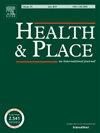Patterns of intimate partner violence in Victoria, Australia: analysis using the National Ambulance Surveillance System
IF 3.8
2区 医学
Q1 PUBLIC, ENVIRONMENTAL & OCCUPATIONAL HEALTH
引用次数: 0
Abstract
Limited surveillance mechanisms have investigated the acute harms associated with intimate partner violence (IPV). This study used novel coded ambulance data to examine the socioeconomic and geographical remoteness distribution of IPV victim survivors attended to by paramedics in the context of acute alcohol and/or drug and mental health harms. Coded ambulance records involving IPV (N = 1484) from 2016 to 2018 were extracted from the Victorian arm of the National Ambulance Surveillance System. Regression models were used to examine sociodemographic characteristics associated with IPV-related ambulance attendances. These attendances were more likely to be associated with the most disadvantaged socioeconomic areas (incidence rate ratio (IRR) = 3.56, 95 % CI 2.71–4.67), and occur in outer regional and remote areas (IRR = 1.58, 95 % CI 1.07–2.35). Ambulance data offers unique potential to map and predict socioeconomic and geographical help-seeking in IPV victim survivors.
求助全文
约1分钟内获得全文
求助全文
来源期刊

Health & Place
PUBLIC, ENVIRONMENTAL & OCCUPATIONAL HEALTH-
CiteScore
7.70
自引率
6.20%
发文量
176
审稿时长
29 days
期刊介绍:
he journal is an interdisciplinary journal dedicated to the study of all aspects of health and health care in which place or location matters.
 求助内容:
求助内容: 应助结果提醒方式:
应助结果提醒方式:


